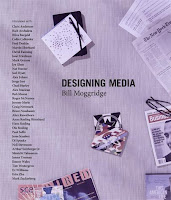 Amore: The Story of Italian American Song
Amore: The Story of Italian American Song
By Mark Rotella
Farrar, Straus and Giroux
The classic voices of American popular song—heard in particular abundance during the Christmas season—include a multitude of Italian Americans such as Frank Sinatra, Perry Como, Tony Bennett and Dean Martin. That’s not just a product of demographics in the 1940s and 1950s when Italian American singers came into prominence, according to author Mark Rotella. Their Italian heritage and their urban immigrant experience were important in forming the popular music of that era, and beyond it.
Rotella’s book is informative in describing the careers of these singers and others less remembered, from forgotten hit-makers to neglected innovators like Louis Prima. For those of us who grew up in the 50s (especially with an Italian heritage) who do recall the likes of Julius LaRosa and Lou Monte, these chapters both evoke nostalgia and provide new background, including better English translations than my family provided of songs sung in Italian that nevertheless made the hit parade.
But his early chapters delineating the Italian influences are especially fascinating. Rotella writes that Italian singers beginning with Sinatra brought two chief influences: “the bel canto, or beautiful singing, style of eighteenth-century Italian opera, and the romanticism of Italian...folk songs.”
The operatic influence was purest in Enrico Caruso, who sang the first song to sell a million records, and later in the popularity of Mario Lanza. But the influence is there in the decidedly non-Italian Elvis Presley, particularly in both the style and melody of his hit, “It’s Now or Never,” which is essentially a version of Caruso’s hit “O Sole Mio.”
In addition to influencing singing styles, versions of actual Italian folk songs became hits, including a lullaby (Como's "Chi-Baba Chi Baba"), a children’s tune (LaRosa' "Eh Cumpari") and a song danced to at weddings (including in
The Godfather) known in various versions (some of them quite bawdy), called "Luna Mezza Mare," which Lou Monte transformed into his hit, "Lazy Mary." (Lest anyone make the prickly mistake of equating Italian music with Sicilian only, Rotella makes a point of naming the Neopolitan folk song (from Naples) as the chief influence.)
The Italian influence in American music goes even farther back, to the origins of jazz in New Orleans, when the so-called French Quarter was 80% Italian (mostly Sicilian), and Italian band musicians became part of the mix of African, French and American Indian (or Cajun) music. At least for awhile, Rotella writes, “blacks and whites would perform at New Orlean’s honky-tonks, many of which were owned by Italians.” Among the musicians getting his start in one of these clubs was Louis Armstrong.
After the era of the Italian crooners (which included many with non-Italian names, like Frankie Laine and Joni James), street corner singing in Italian city neighborhoods piggybacked on black do-wop in the rock & roll era with such groups as the Crests, the Elegants, the Regents and especially Dion and the Belmonts and Frankie Valli and the Four Seasons. (Another possible influence on these groups and their songs that Rotella doesn’t mention but which I hear is the music of the Catholic high Mass.)
This late 50s and early 60s period also produced the next generation of crooners (Frankie Avalon, Bobby Rydell, Connie Francis, Bobby Darin), a pop lineage continued by less ethnically identifiable stars of Italian heritage, like Madonna and Lady Gaga.
Rotella skips over some fascinating figures like Jimmy Durante, whose career started out as a New Orleans-style piano player in the 1920s, continued through vaudeville, New York nightclubs, Broadway, Hollywood movies and television stardom before recording indelible and even definitive vocal renditions of pop standards. (For that you need to find the out-of-print Damon Runyoneque ramble called
Schnozzola by Gene Fowler.) But such exclusions are inevitable in a single book. Most of the story is here, the reading is easy, the information skillfully integrated into personal storytelling, including some retrospective interviews and visits to important places in this history, not many of which remain as they were, or are in any sense preserved.
Rotella ends fittingly with perhaps the last of the great Italian era singers, still going strong: Tony Bennett. (Have you listened--really listened--to "I Left My Heart in San Francisco" recently? With Sinatra, he's the best.) As both a personable tribute to that era and as an informed and needed nudge to historians to take the Italian American role in American music more seriously, this book admirably succeeds.


































